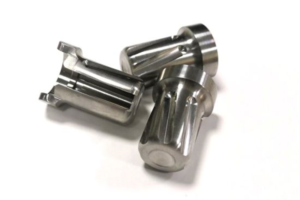Precision CNC Grinding Manufacturer in China
Professional CNC Grinding Services for Critical Components
 As a leading CNC grinding& CNC Machining manufacturer in China, we specialize in precision surface finishing for metal components requiring ultra-tight tolerances. Our CNC-controlled grinding machines deliver ±0.001mm accuracy for industries including aerospace, automotive, medical devices, and precision tooling.
As a leading CNC grinding& CNC Machining manufacturer in China, we specialize in precision surface finishing for metal components requiring ultra-tight tolerances. Our CNC-controlled grinding machines deliver ±0.001mm accuracy for industries including aerospace, automotive, medical devices, and precision tooling.
Why Choose Our CNC Grinding Services?
1. Advanced Grinding Technology
- CNC cylindrical grinders (Ø5-500mm x 2000mm)
- Surface grinders (600x300mm to 2000x800mm)
- Centerless grinding for high-volume production
- Tool & cutter grinding for custom cutting tools
- ID/OD grinding for bore and shaft finishing
2. Material Capabilities
We grind all engineering materials with specialized processes:
| Material | Surface Finish (Ra) | Tolerance Capability |
|---|---|---|
| Tool Steel | 0.1-0.4μm | ±0.002mm |
| Carbide | 0.05-0.2μm | ±0.001mm |
| Stainless Steel | 0.2-0.8μm | ±0.005mm |
| Titanium | 0.4-1.6μm | ±0.008mm |
| Ceramics | 0.1-0.5μm | ±0.003mm |
3. Precision Capabilities
- Dimensional tolerances down to ±0.001mm
- Roundness/cylindricity within 0.0005mm
- Parallelism/flatness within 0.001mm/100mm
- Surface finishes from Ra 0.05μm (mirror finish)
4. Production Flexibility
- Prototype grinding: 1-10 pieces
- Small batch: 10-1,000 pieces
- High-volume: 1,000+ pieces
- Just-in-time delivery available
Our CNC Grinding Equipment
Machine Specifications
| Machine Type | Capacity | Accuracy |
|---|---|---|
| CNC Cylindrical Grinder | Ø500x2000mm | ±0.001mm |
| Surface Grinder | 2000x800mm | 0.002mm flatness |
| Centerless Grinder | Ø3-150mm | ±0.003mm |
| Tool & Cutter Grinder | Ø1-300mm | ±0.002mm |
Advanced Features
- In-process gauging systems
- Automatic wheel dressing
- Temperature-controlled environment
- Vibration-dampened foundations
Specialized Grinding Services
1. Precision Form Grinding
- Involute gear profiles
- Ball screw threads
- Custom tool geometries
2. High-Precision Bearing Surfaces
- Raceway grinding
- Ball/roller paths
- Superfinishing options
3. Medical Component Finishing
- Implant surfaces
- Surgical tool edges
- Biocompatible finishes
Quality Assurance Process
✔ Pre-production process validation
✔ Real-time SPC monitoring
✔ Post-process CMM verification
✔ Surface roughness analysis
✔ Microscopic edge inspection
Industries We Serve
Aerospace & Defense
- Turbine shaft journals
- Landing gear components
- Missile guidance parts
Automotive
- Fuel injection components
- Transmission shafts
- Steering system parts
Medical Devices
- Orthopedic implants
- Dental tooling
- Surgical instrument shafts
Industrial Equipment
- Hydraulic cylinders
- Linear motion guides
- Precision spindles
Competitive Advantages
✅ 40+ CNC grinding machines in operation
✅ ISO 9001 & ISO 13485 certified processes
✅ 20 years of precision grinding experience
✅ 40% cost savings vs. Western suppliers
✅ 72-hour standard turnaround
Start Your Grinding Project Today
Submit your technical drawings to receive:
- Same-day quotation
- Free process recommendations
- Material optimization advice
Contact our grinding specialists to discuss your precision finishing requirements and discover how we can enhance your component performance.






